https://ift.tt/wlWHTXF Coffee Data Science Another look to double check a feature Previously , there has been quite a few studies on the ...
Coffee Data Science
Another look to double check a feature
Previously, there has been quite a few studies on the DiFluid refractometer compared to VST and Atago. I did overlook one feature on the DiFluid: multiple samples. VST and Atago both take multiple samples, but they don’t give the option or display the error amongst the samples taken. DiFluid does, so I collected some more data using this multiple feature to take another look.
Equipment/Technique
Espresso Machine: Decent Espresso Machine
Coffee: Home Roasted Coffee, medium (First Crack + 1 Minute)
Shot Preparation: Staccato Tamped
Pre-infusion: Long, ~25 seconds
Filter Basket: 20g VST
Other Equipment: Atago TDS Meter, DiFluid TDS Meter, Acaia Pyxis Scale
Metric of Performance
I used TDS to evaluate these two sensors. Total Dissolved Solids (TDS) is measured using a refractometer, and this number combined with the output weight of the shot and the input weight of the coffee is used to determine the percentage of coffee extracted into the cup, called Extraction Yield (EY).
Data
I collected 29 pairs of data points using DiFluid and Atago, and for 28 pairs, I also cooled the sample and collected another TDS sample. For DiFluid, I only used the 10 sample averaging feature. There is a general trend is that DiFluid under reports TDS, but the trend has an interesting offset because it is very close to y = x.
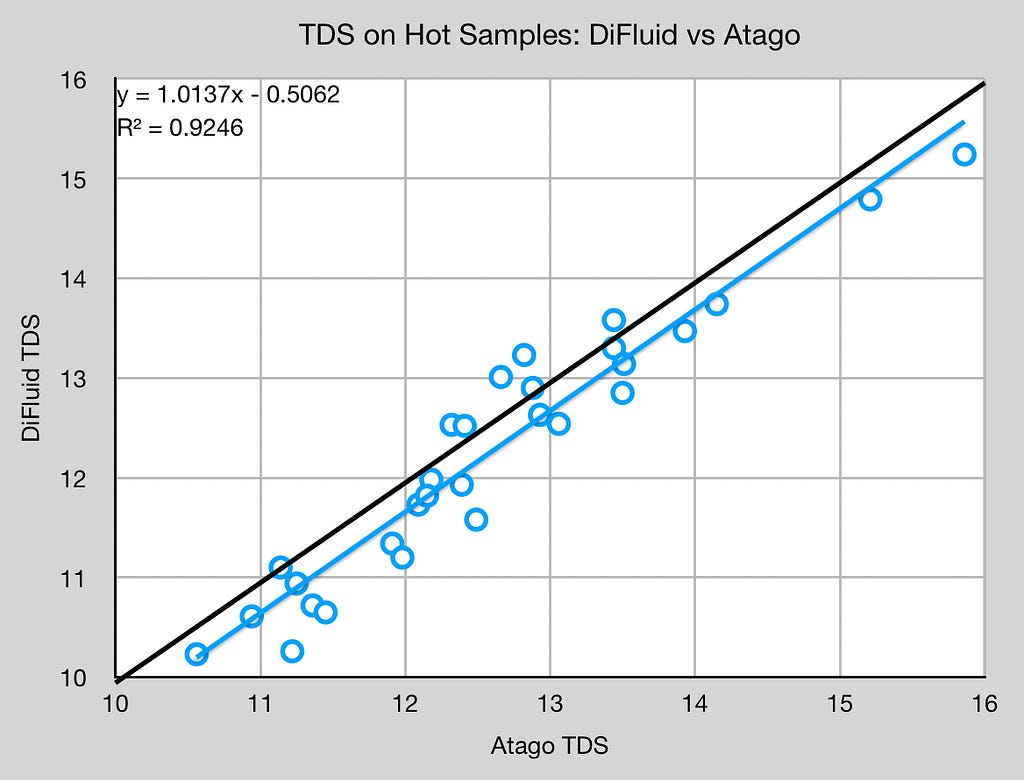
I added the error bars too, but I don’t think they made much of a difference.
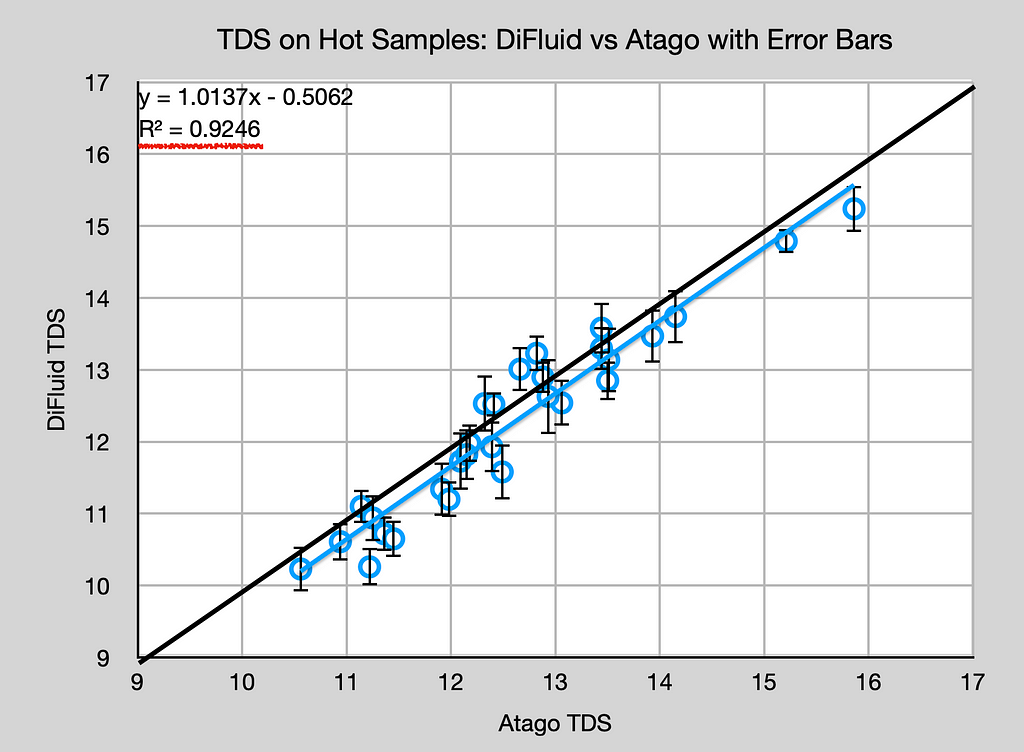
When cooling the samples, DiFluid over reported TDS, but it had a similar trend. I didn’t plot the error bars because the error was typically below 0.05%
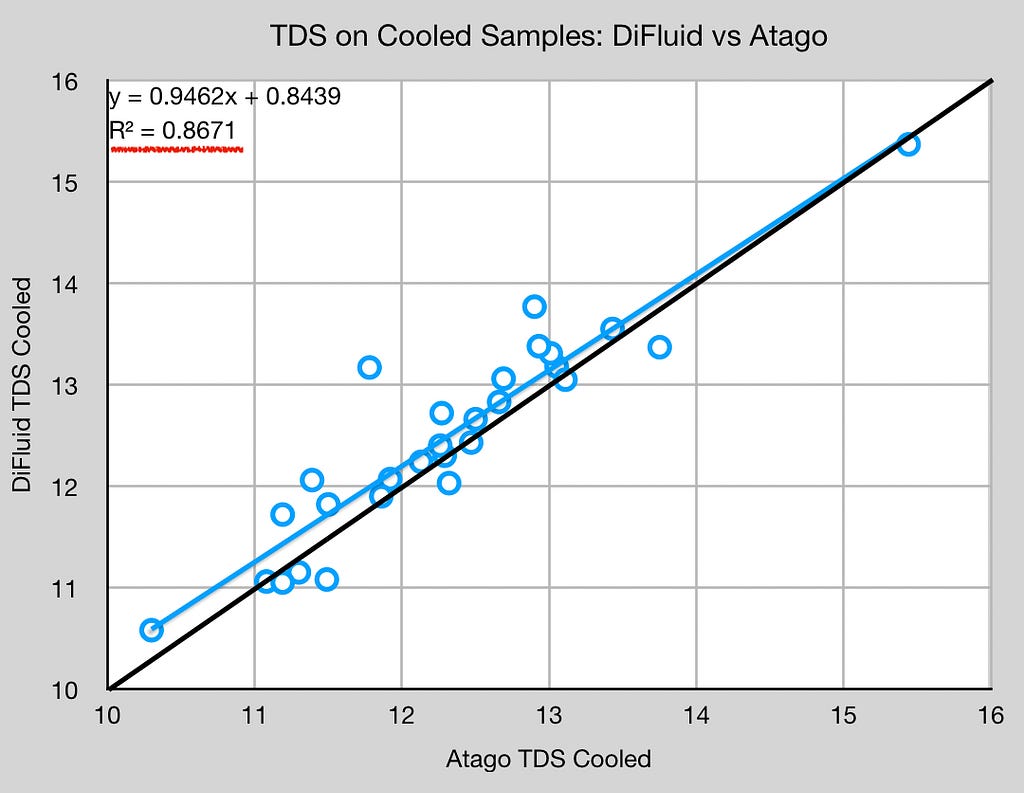
I compared the refractive indices of hot and cold samples, and the offset was very clear on how temperature affects refraction.
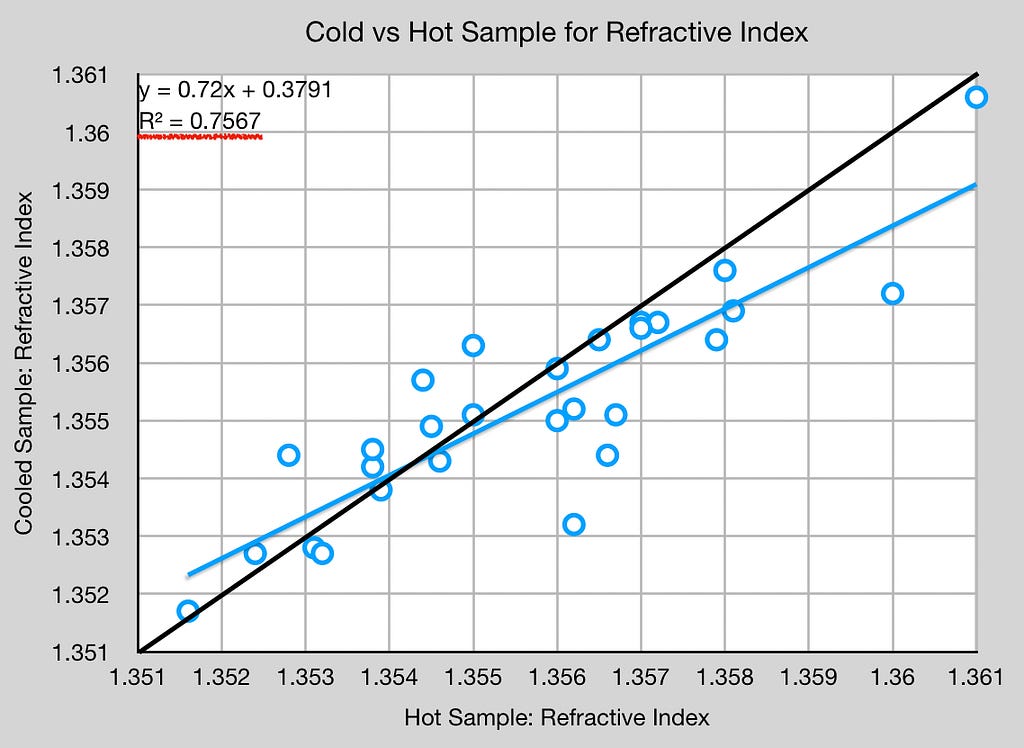
In looking at error rates, the cold error rate is very low to the point I suspect multiple samples are unnecessary. As mentioned before, DiFluid has less mass so it doesn’t have the same temperature stability as Atago or VST.
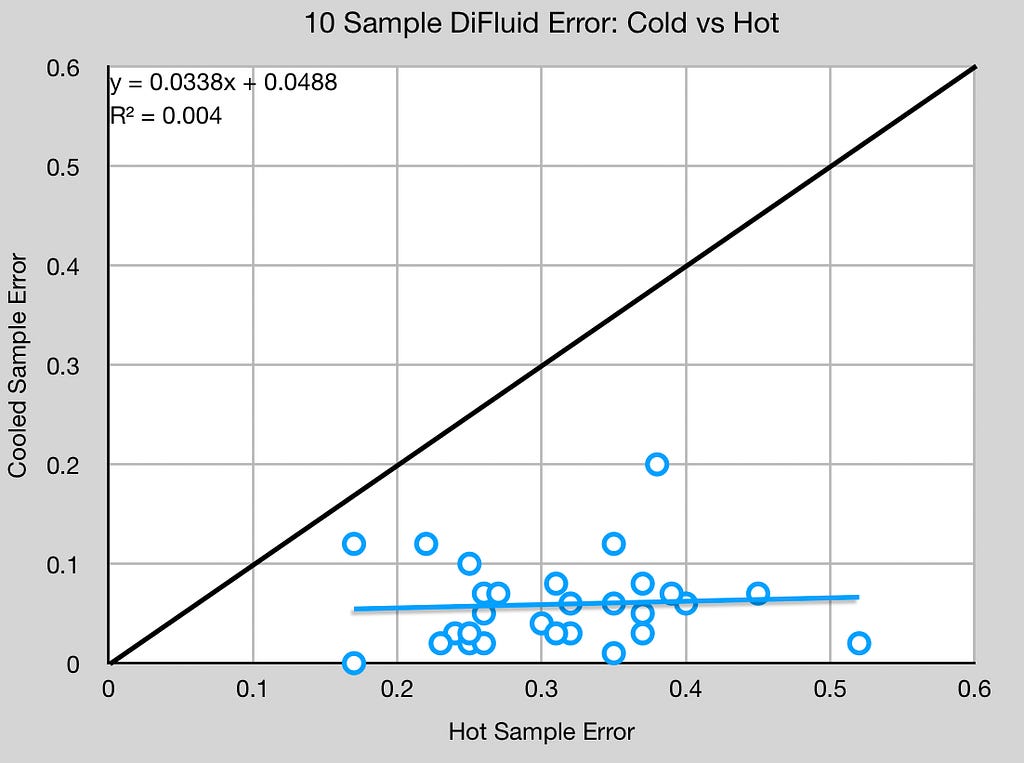
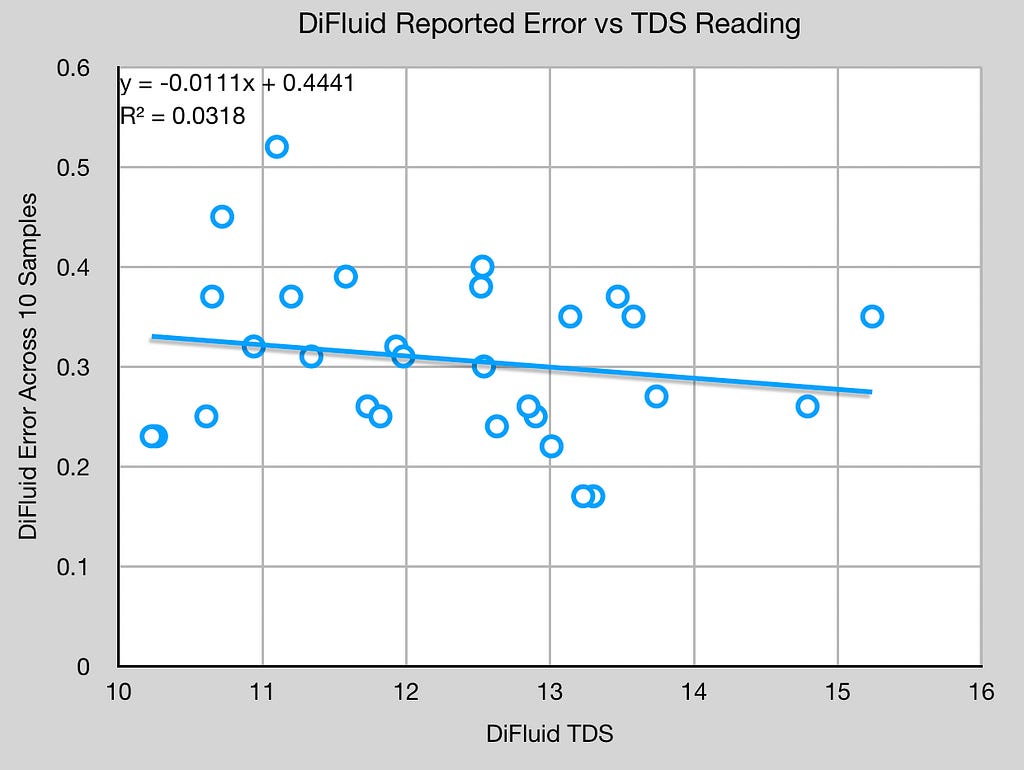
In looking at TDS for Cold vs Hot, Atago and DiFluid have similar trend slopes, but there was an offset.
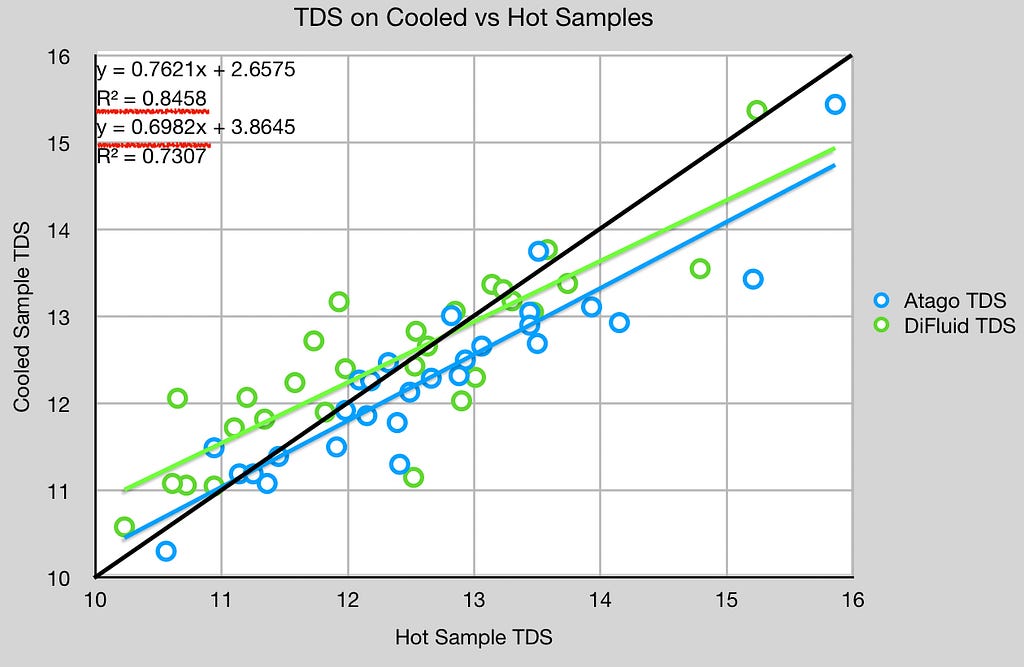
DiFluid is an interesting sensor because it makes data available that other refractometers don’t. The difficulty in this analysis is that I only have a single sample not all 10. Often, the same readings are changing as the sample is cool. It is quite possible my device is the best one, so this difference should be troublesome. Or, my device could be the worse sample. Luckily, a new DiFluid model is coming, so more data could be had!
If you like, follow me on Twitter, YouTube, and Instagram where I post videos of espresso shots on different machines and espresso related stuff. You can also find me on LinkedIn. You can also follow me on Medium and Subscribe.
Further readings of mine:
Collection of Espresso Articles
A Collection of Work and School Stories
Multiple Samples for the DiFluid Refractometer in Espresso was originally published in Towards Data Science on Medium, where people are continuing the conversation by highlighting and responding to this story.
from Towards Data Science - Medium
https://towardsdatascience.com/multiple-samples-for-the-difluid-refractometer-in-espresso-c9a9cda08aab?source=rss----7f60cf5620c9---4
via RiYo Analytics

No comments